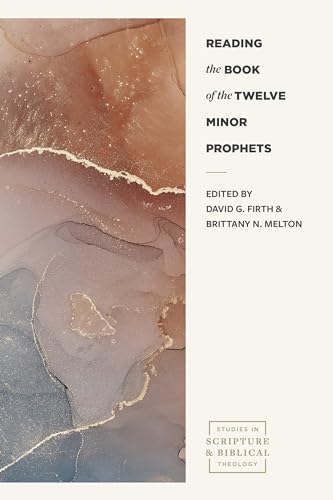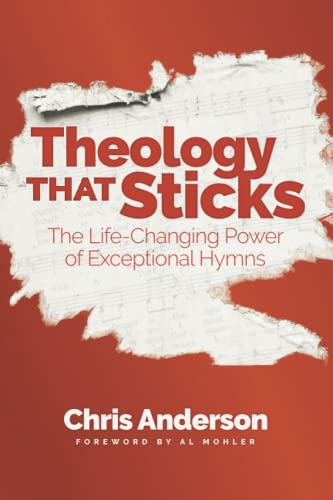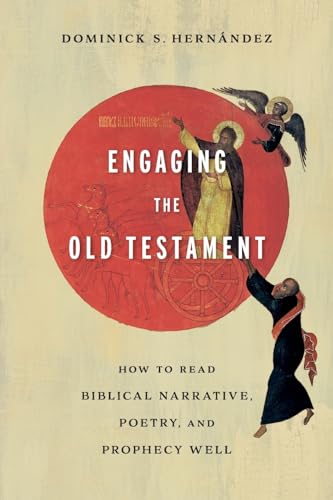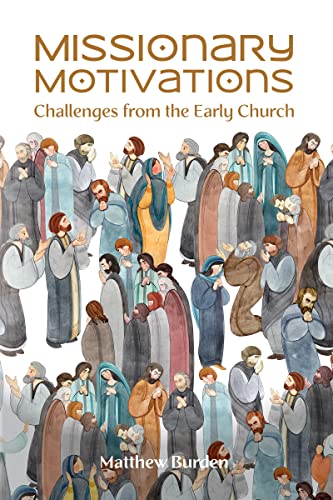Reading the Book of the Twelve Minor Prophets
Written by David G. Firth and Brittany N. Melton, eds Reviewed By Peter C. W. HoAt the crux of the problem in the scholarship of the Book of the Twelve Minor Prophets in the past thirty years is whether these twelve books should be read as distinct texts or as a unified book. This edited volume, guided by two experienced Old Testament scholars, is one of the most recent forays into the research on the Book of the Twelve. Notwithstanding this crux in the Twelve, this book delves into a surprisingly rich and diverse range of topics. It is striking to find discussions of insects alongside theodicy and of Martin Luther alongside technology within this volume.
The first chapter, “On Reading the Twelve Minor Prophets,” sets out the editors’ vision for the book. They trace the recent scholarship on this corpus and highlight the hermeneutical issue of unity and diversity in reading these books. The editors believe that the two extreme positions of reading the Twelve—as distinct units or as a unity—are to be held in tension. They posit that “no final answers are given to the question of how we are to read the Minor Prophets/Book of the Twelve” (p. 6).
The second chapter by Isabelle M. Hamley seeks a rereading of the marriage metaphor. Hamley argues that the marriage metaphor must consider the family and social aspects associated with marriage. She argues that the best way to read the violence in the text is as a form of God’s lament over his people. Tchavdar S. Hadjiev’s essay offers several readings of Joel with and without the context of the Twelve. Hadjiev rejects that the Twelve “were composed, or meant to be read, together” (p. 31), and argues that such readings should not be “be allowed to dominate contemporary readings of the Minor Prophets” (p. 40) nor be the “primary mode of reading” (p. 45).
The following chapter, by Heath A. Thomas, is an interesting exploration of fishing and the building of cities in the book of Habakkuk (1:15–17; 2:12–14). Thomas points out that Habakkuk uses advanced techniques (technology), exemplified in these texts as implementations of human destruction. Thomas’s piece is intended to help us reflect on our invention of technology and its application in the modern world.
Thomas Renz’s essay shows us how Luther exegeted a text as an involved and interested “participant” rather than an “outside observer” who can ignore any theological commitments to the texts. Renz sees that Luther’s exegesis and application are closely integrated, and Luther was not afraid to be labeled as someone “controlled and determined by prior theological commitment” (p. 87), as modern scholars would be concerned with today.
In the following essay, S. D. (Fanie) Snyman argues that questions of theodicy remain unanswered in the Old Testament. When the issue is raised, God responded differently in different contexts. In Job, the emphasis is on “the incomprehensibility of the way in which God directs events” (p. 101), in Habakkuk, the emphasis is “the encouragement to the people to keep faithful,” and in Malachi, it is “the future that will bring a decisive turn of events with a complete reversal of the situation” (p. 102).
Anthony Petterson defines the scope of “New Covenant concepts,” traces them across the Twelve, and examines their significance. These concepts are defined using four criteria: (1) a divine initiative to internalize the law; (2) a new result of faithfulness to God; (3) a new basis of forgiveness; and (4) a new scope of inclusion (pp. 104–5). Petterson points out that these concepts are parallel to the claims of the New Testament about what Jesus has accomplished through his death, resurrection, and ascension.
Next, Beth M. Stovell traces how the two concepts of the “divine spirit” and presence are connected for literary purposes in the Twelve. She uses the metaphor theories of Gilles Fauconnier and Mark Turner with other theories on text cohesion and she argues that the use of such metaphors “frequently highlight expectations for renewal and transformation for specific rhetorical purposes” (p. 125).
In an interesting essay, Julie Woods examines (exhaustively) all the animals, birds, fishes, and insects that appear in the Twelve. She argues that these creatures are used in a variety of ways in their relationship with humans. They can be used actively as the tools of God’s judgment or passively to depict the effects of the judgment. Nonetheless, Woods points out that “rarely, though significantly, animals are shown to have a relationship with God, and in one instance God makes a covenant with them” (p. 170).
In the final chapter, John Goldingay raises the question of theology in the Twelve. He examines four motifs: (1) Yahweh’s self-description in Exodus 34:6–7 (grace formula); (2) Yahweh’s attachment to Israel and as God of all the nations; (3) the Day of Yahweh; and (4) the Davidic promises (p. 172). He argues that the Twelve has an “overlapping theology” with Jeremiah, Isaiah, and Ezekiel due to a process of redaction.
This book curates some of the finest scholars in the field, who have written top-class commentaries and are veterans in this field. Not all the books of the Twelve are addressed at chapter length, but the topics discussed in this volume are surprisingly rich and diverse. Several essays deal with the use of metaphors, and rightly so, as they are well-featured in the Twelve (e.g., marriage, technology, animals). A number of essays discuss various attributes of God that appear across the entirety of the Twelve. For instance, the topics of the New Covenant (Petterson and Goldingay), theodicy (Synman), and divine spirit and presence (Stovell) are studied longitudinally.
The contributors, however, do not seem to interact with each other. And it is surprising that out of the nine essays (excluding the editors’), only two address the crux in the Twelve that the editors raised in their opening chapter (Hadjiev and Goldingay). A contributing reason for this discrepancy may be the selection of contributors. Based on my understanding, it seems that only two of them (Petterson and Thomas) are more sympathetic to a unified reading of the Twelve. As far as I am aware, neither Renz nor Goldingay (and evidently, Hadjiev) is inclined to such readings. By their choice of contributors, the editors have sought a broader and more neutral ground for this edited volume.
This book is a good addition to the scholarship library of the Book of the Twelve. However, it does not seek to answer definitively the (perhaps unanswerable) question of whether the Twelve should be read as distinct individual texts or as a unified book.
Peter C. W. Ho
Peter C. W. Ho
Singapore Bible College
Republic of Singapore
Other Articles in this Issue
Menzies responds to Tupamahu’s post-colonial critique of the Pentecostal reading of Acts and the missionary enterprise...
The Lamblike Servant: The Function of John’s Use of the OT for Understanding Jesus’s Death
by David V. ChristensenIn this article, I argue that John provides a window into the mechanics of how Jesus’s death saves, and this window is his use of the OT...
Geerhardus Vos: His Biblical-Theological Method and a Biblical Theology of Gender
by Andreas J. KöstenbergerThis article seeks to construct a biblical theology of gender based on Geerhardus Vos’s magisterial Biblical Theology...
Is the One God of the Old Testament and Judaism Exactly the Same God as the Trinitarian God—Father, Son, and Holy Spirit—of the New Testament and Christian Creeds?
by John Jefferson DavisThis article argues that the One God of the Old Testament and Judaism is exactly the same God as the Trinitarian God of the New Testament and Christian creeds...
A well-known Christian intellectual and cultural commentator, John Stonestreet, has often publicly spoken of the need for Christians to develop a theology of “getting fired...






